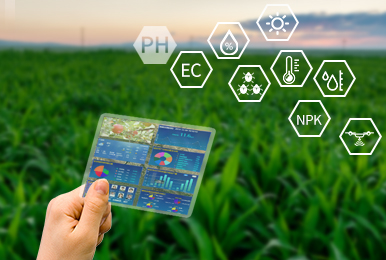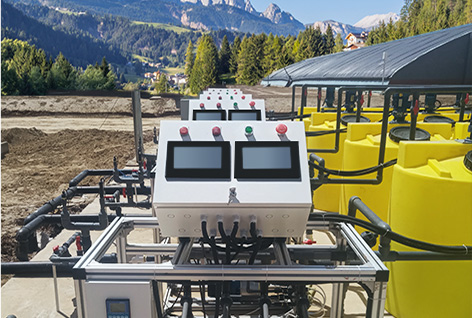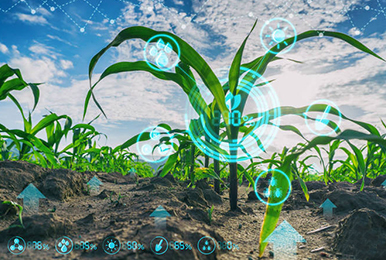Background:
Agriculture today is more advanced than ever. While the sector may still have a reputation for being antiquated, that’s far from the truth. Data analytics, robotics, the internet of things (IoT), and other cutting-edge technologies are becoming standard across the industry.More and more smart agricultural equipment is coming into people’s life.
Most people see this technological transformation as positive, but it carries some unique concerns, too. As these technologies have become more common, their issues have become more prevalent. In some circumstances, it can seem like high-tech agriculture equipment hinders farmers.

The Downsides of High-Tech Equipment
While new technology is exciting, it can carry some unforeseen risks. Here are a few of the most significant issues that tech-forward farmers face.
1. Right-to-Repair Concerns
One of the most prevalent issues with new technologies across industries is the right to repair. Manufacturers often withhold tools and information users need to fix their own equipment, even banning them from tampering with their products. As a result, farmers must turn to the manufacturers or authorized repair services if they need to perform maintenance.
This may not be an issue with more conventional equipment since their maintenance needs may be common knowledge. However, most farmers lack the experience and expertise to repair new technologies by themselves. Without the right tools and information, maintenance then becomes a lengthy, expensive process.
When farmers can’t fix equipment themselves, they typically need to pay another business and wait for their availability. Those wait times translate into lost productivity, further raising the financial impact of repair services. As more farmers use these technologies, demand for these limited authorized services will rise, leading to longer wait times.
2. High Costs
Another downside to high-tech agricultural equipment is the cost. Unsurprisingly, computerized and robotic versions of farming machines are often far more expensive than their conventional counterparts.
High-tech farming also involves more equipment to begin with, thanks to reliance on sensor networks and similar technologies, further raising costs.
Farmers also have fewer options for buying new technology, limiting their fiscal wiggle room. Used heavy equipment typically carries much lower costs, but it can be difficult to find used models of newer technologies. Farms must either continue to use old gear or face considerable upfront costs for newer versions.
While most of these technologies lead to lower costs over time, farming often has low profit margins. Farms may not be able to bear the weight of the upfront expenses.
3. Cyber Risks
In many cases, high-tech equipment means technology with wireless connectivity. IoT functionality has many benefits, but it also introduces the risk of cybercrime to an industry that didn’t have to worry about it previously.
Cybersecurity threats have grown 400% across 2019 and 2020, increasing across virtually every attack type. Cybercriminals are also targeting rapidly digitizing industries because of their inexperience in cybersecurity and growing attack surfaces. As farms implement more connected devices, they may become prime targets.
Farmers lack experience in defending against hackers, but every new IoT device is another potential gateway for cybercriminals. Hackers could take control of their equipment or hold valuable information for ransom. These crimes aren’t a concern with conventional tools, but they’re an unavoidable part of new tech.
4. Environmental Impact
While many new farming technologies aim to make agriculture more sustainable, they can introduce environmental hazards of their own. Since automated equipment can let farms do more with fewer workers, it may lead to faster expansion. That’s economically beneficial, but it could also increase agriculture’s already substantial ecological footprint.
As farms expand, they clear land, reducing the habitable space for many species. Scientists estimate that if current expansion continues, agriculture could affect 90% of land animals through habitat destruction. Rapid implementation of new technologies could accelerate that process, threatening more species faster.
Some experts also point out that precision agriculture technologies often don’t address pesticide use. As farmers invest more heavily in these methods, they could become more reliant on pesticides, which can leak into the surrounding environments. Moving away from these chemicals would disrupt the processes they’ve become accustomed to, making it challenging to go truly green.

Advantages of New Farming Equipment
These disadvantages are concerning and deserve attention. However, farmers must also weigh the positives of high-tech agriculture equipment. Here are some of the leading benefits.
1. Productivity
Many new farming machines involve some degree of automation. While technology can’t yet automate every farming process, it does free farmworkers to focus on other tasks, improving productivity. This productivity boost can help farms mitigate low profit margins and ongoing labor challenges.
Farms have experienced a 53% decline in hired workers and a 73% decline in family workers since 1950, despite the demand for agriculture growing. These labor shortages will likely persist as the agricultural workforce ages and fewer young workers enter the industry. In light of these challenges, increased productivity from automated technologies is a crucial advantage.
Improved productivity will also help offset operating expenses. Over time, that will help make up for the higher upfront costs of these technologies.

2. Sustainability
Despite their potential for increasing environmental impacts, many new agriculture technologies can improve sustainability. Habitat destruction remains a concern, but these innovations can produce significant improvements in other areas. Most notably, they reduce farming’s resource usage.
IoT sensors enable precision agriculture, helping farmers use as little water, power, and other resources as possible. As a result, they can grow more with less – reducing waste and producing more food for what they consume. This shift could help farms feed more people without expanding at their current rate.
Some new technologies include moving away from fossil fuels in tractors and other farm vehicles. Since transportation accounts for 29% of all greenhouse gas emissions in the U.S., that can have a significant impact.
Should Farmers Embrace New Technologies?
Given these upsides and downsides, where should farmers land on embracing new technologies? Overall, the benefits are too promising to ignore – especially considering the industry’s current challenges – but farmers should implement these technologies carefully.
Instead of immediately replacing old equipment with newer versions, farms can gradually replace aging machines with high-tech options as needed. This more gradual approach can mitigate the costs and environmental impact, guiding more thoughtful purchasing decisions.
Farms should also plan ahead for upgrading. They should ensure they account for cyber risks and understand their environmental impact before buying any new technology.
Legislative change may also be necessary. Recent right-to-repair bills are a step in the right direction, though the industry will likely need more environmental and cybersecurity standards as well. These laws will help remove the burden from farmers and provide much-needed guidance.
Agriculture Innovation Can Be Complicated
New technologies are impressive, but their consequences are often more complex and far-reaching than they first appear. Farmers must consider all of these factors before deciding to upgrade. While high-tech equipment has many advantages, it requires a thoughtful implementation to make the most of them.